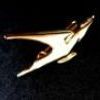Recently I got a chance to work with few brand new A320neo and A321neo aircraft and they were fitted with CFM LEAP-1A engines. I noticed some differences in the LEAP engine when compared to other A320 family engines(mainly CFM 56-5B and V2500). What I noticed is,
1. It has a flag to indicated the locking status of fan cowls connected to the number 1 latch.
2.Less number of fan blades when compared to the other engines(18 to be more specific
3. Its FADEC is physically divided in to two channels with a pressure sub system located externally to the EEC.
4.It has some heat sink like protrusions inside the engine just after the fan blades(someone please tell me the name and reason to have them).
5. Sides of the oil tank and IDG has changed from the CFM 56 position.
6. C ducts can't be opened when the Slats are fully deployed(they will collide
This is what I noticed and I want to know what are the major/minor changes has been made in the LEAP engine.
Regards,
Skywalker92





 )
)